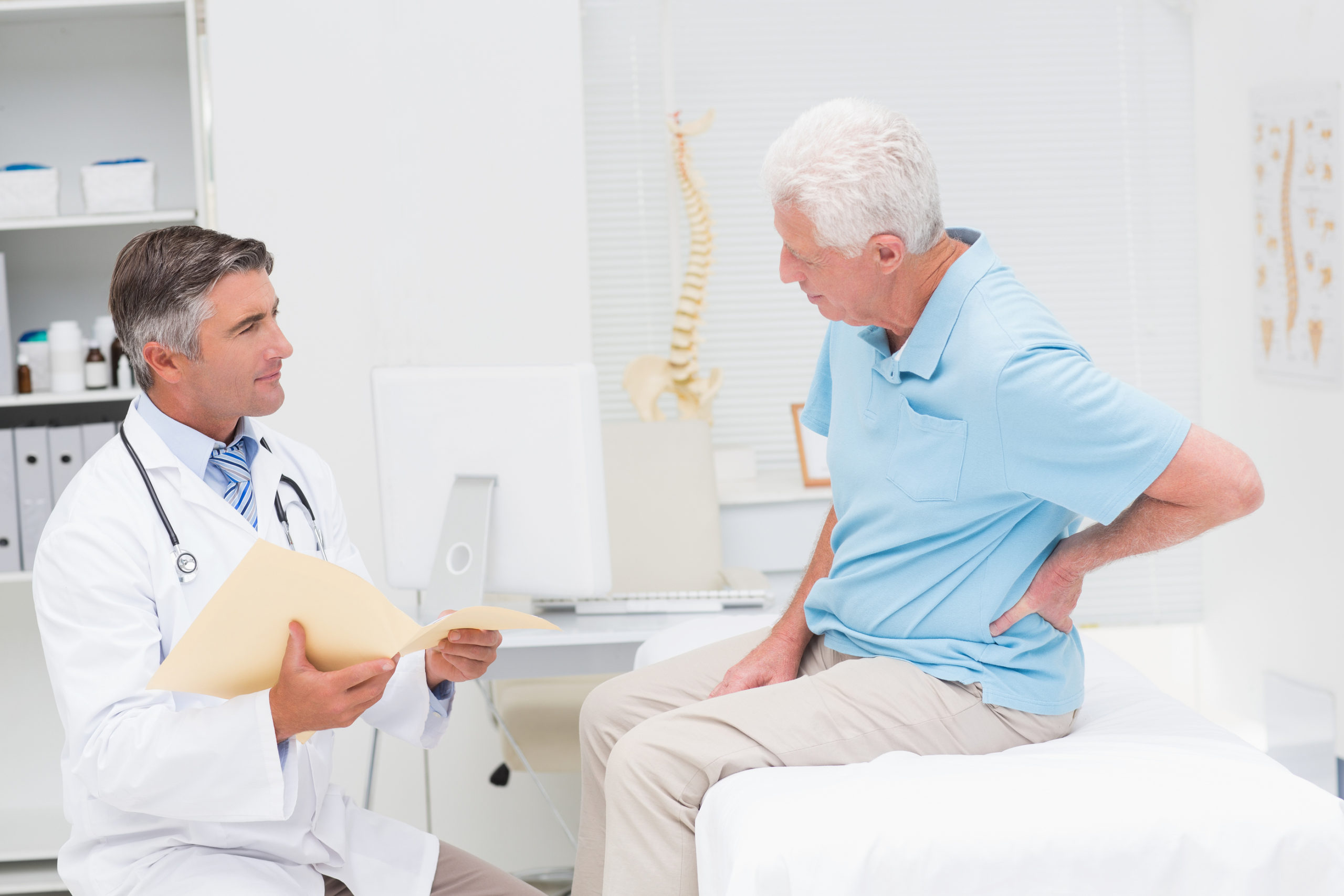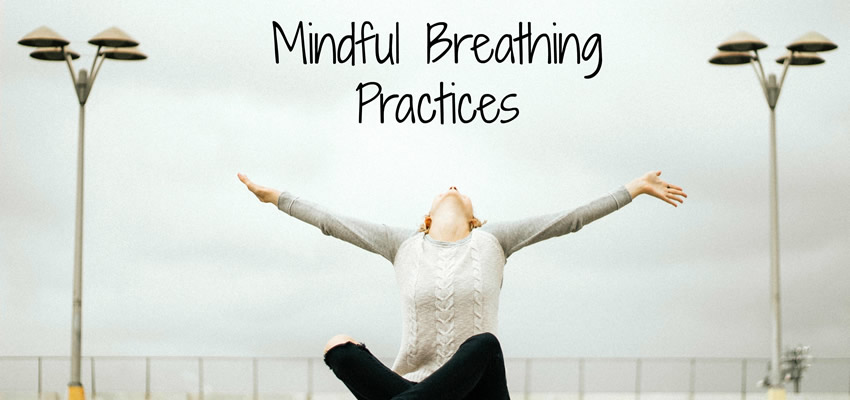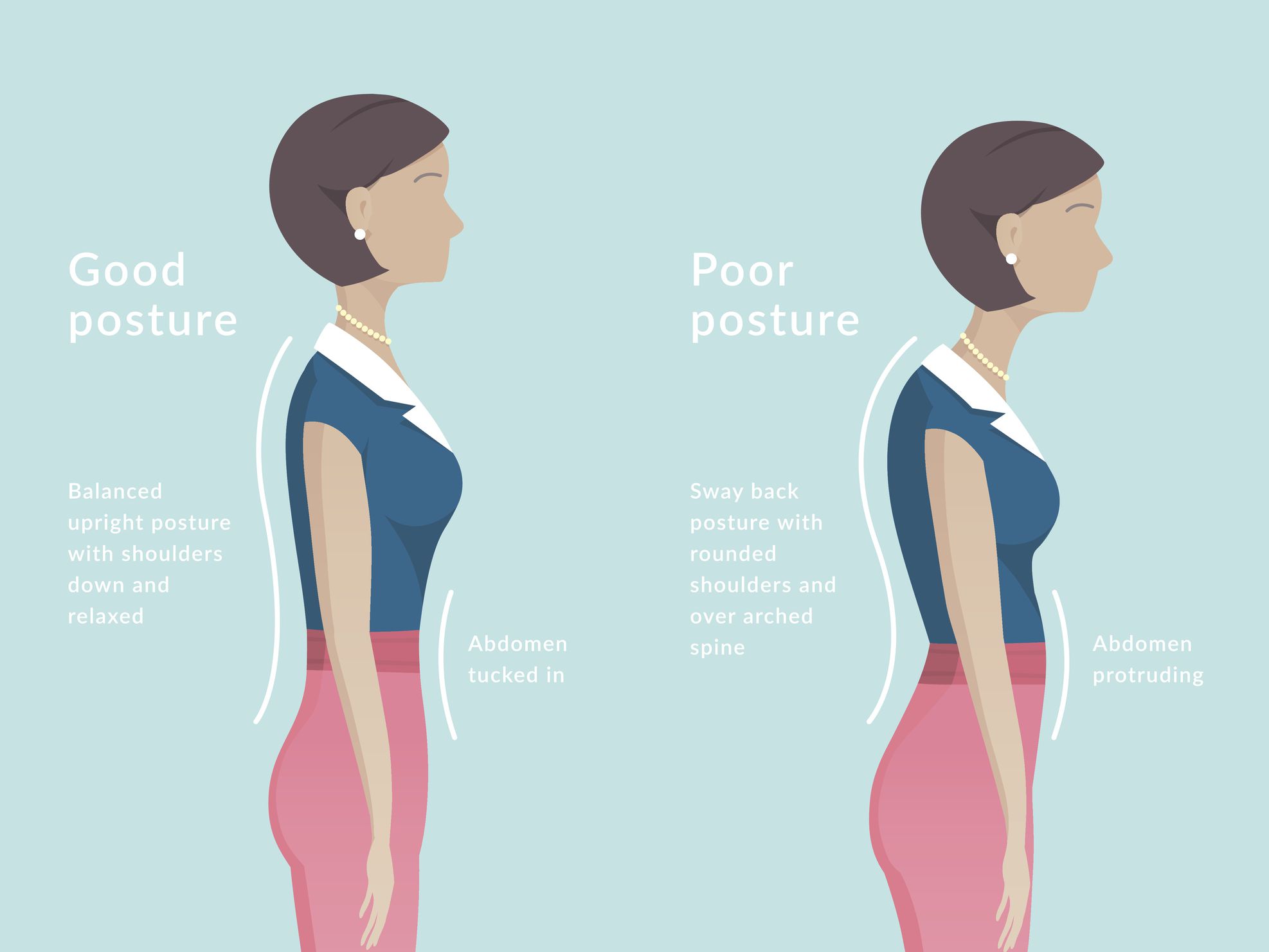
The main goal of massage is to increase the circulation of blood and other fluids within the body. This can make it easier for your body to deliver nutrients and oxygen to your muscles as well as eliminate waste.
Massage also provides many of the same benefits of stretching. It can help improve the flexibility of muscles and relieve tension caused by stress and inflammation.
The following five products, one in each of the major self-massage categories, can help you manage your specific type of low back pain.
1. RENPHO Percussion Massager

This is one of the more traditional back massage options for home use. A percussion massager uses strong pulses to knead your muscles. The strength is adjustable and different cups may be applied to the massager’s heads to produce different sensations.
The benefits of a percussion massager are ease of use- you don’t have to know where to press you can use the long handle on this device to position the massager exactly where it hurts.
The downside to using a percussion massager is its weight. While these devices are effective, they can also be quite heavy and difficult to use for long stretches of time. If the machine is fully rechargeable like the model suggested here, the massage time caps out at 20 minutes to prevent overheating or over-stimulation of your muscles.
2. Dual Channel TENS and EMS Unit

If you are familiar with how your muscles are laid out, or can easily reach your lower back and follow an application chart, a TENS Unit can be a fast way to stimulate achieve lower back pain relief.
A TENS unit works by sending electrical impulses through your muscles via small nodes attached at either end of your muscles. These impulses disrupt the pain signals your muscles send to your brain, reducing pain. The same TENS unit, with the same application of nodes, can also be used to effortlessly strengthen the small muscles in your lower back.
This particular unit is capable of both TENS and EMS functions, providing muscle strengthening and pain relief modes. It also includes a long-lasting battery (20+ hours) and plenty of additional conductive pads.
3. Traditional Heated Back Massager
This contoured massager should be easy to rest between your lower back and a chair. The four massage zones apply one of three levels of pressure to your back, with or without added heat. If you do choose to add heat, it is added gradually so your muscles have some time to adjust.
4. Basic Foam Massage Ball
If you would like an option that requires no electricity and that can be easily taken with you wherever you go, a massage ball is a great choice. You’ll want to find a model, like the one suggested here, with a layered, light-weight foam design. This will provide strength and durability over time.
To use this massager, simply roll it along the muscles of your low back, parallel to your spine. You can also place the ball between a pressure point on your back and a hard surface, allowing the ball to press into the pressure point. Either of these self-massage techniques can help relieve tension and improve circulation.
5. Lower Back Stretcher and Massager

A strong, firm foam and fabric device, this lower back stretcher can help provide relief from low back pain as well as improve posture and muscle strength. All you need to do is place this rounded foam massager on the floor and lie down, allowing the object to settle against the natural curve of your lower back.
This product should support up to 300lbs of pressure and all you need to do is lie there and allow the muscles of your back to naturally relax and stretch out. No batteries, electricity, or straining motions are required to use this simple form.
How to Make a Lower Back Massager More Effective
While all five of these products work well on their own, there are a few things you can do to increase their effectiveness. The following options walk you through several strategies that, with the use of a low back massager, could help you lessen your pain over time.
Add Heat to Improve Circulation and Loosen Muscles
Warming up your muscles before a massage can help improve the effectiveness of the massage. You can either do this by taking a relaxing bath, gently kneading the area manually, or applying heat.
An electric heating pad is a good way to apply heat evenly and without the risk of accidentally burning your skin. Belt-style heating pads with rechargeable batteries are also available and can easily fit under your everyday clothes. A hot water bottle with a wool cover is another effective option.
Stretch and Strengthen Your Lower Back Muscles
If you incorporate a lower back stretcher into your warm-up or cool-down routine, as well as exercises to help build up your abdominal muscles your posture should improve naturally. Alternatively, several back massagers can be fitted to a belt or chair to provide natural lumbar support.
If you feel you need help getting your abdominal strength to where it needs to be, without crunches or floor work, low-impact yoga or Pilates is a great option. A yoga wheel or exercise wedge can also help support you during these types of workouts.
Practice Mindful Breathing to Relieve Tension

Stress leads to tension. Though self-massage can help relieve this tension, deep breathing exercises can make those massages more effective. The most basic form of deep breathing to use before or during a massage is called “box breathing”. All you need to do is breathe in for 4 beats, hold for 4 beats, breathe out for 4 beats, and hold for 4 beats. Then repeat as needed.
Improve Your Posture

If you have slowly developed low back pain but do not have a lower back injury, poor posture could be partly to blame. Even if you do have an injury, improving your posture will help support your back.
Focus On Your Pressure Points
There are four main pressure points for your lower back. By applying steady pressure to these areas, it’s possible to help relieve muscle tension. You can either use your thumbs or a specialized product designed to make it easier to apply tension to small, specific points.
The pressure points of your lower back are located just below your natural waist. An easy way to locate these points is to place your hands on your waist with your thumbs on your back. The pressure points exist on either side of your spine, two on each side, in a band at this level.
You can use a firm foam ball, like the one mentioned above, but for more accuracy and control, a product like the Knobble. This is a great tool for anyone that has RSI in their hands or an inflammatory condition like arthritis.
If you have trouble reaching the pressure points on your back, you can also use a product like the Trigger Point Pro. With this, you can reach the pressure points on your low back and shoulders, in case you also deal with referred pain. Working on your pressure points before or after a massage, with your hands of any of these tools, can increase the effectiveness of other massage devices.

